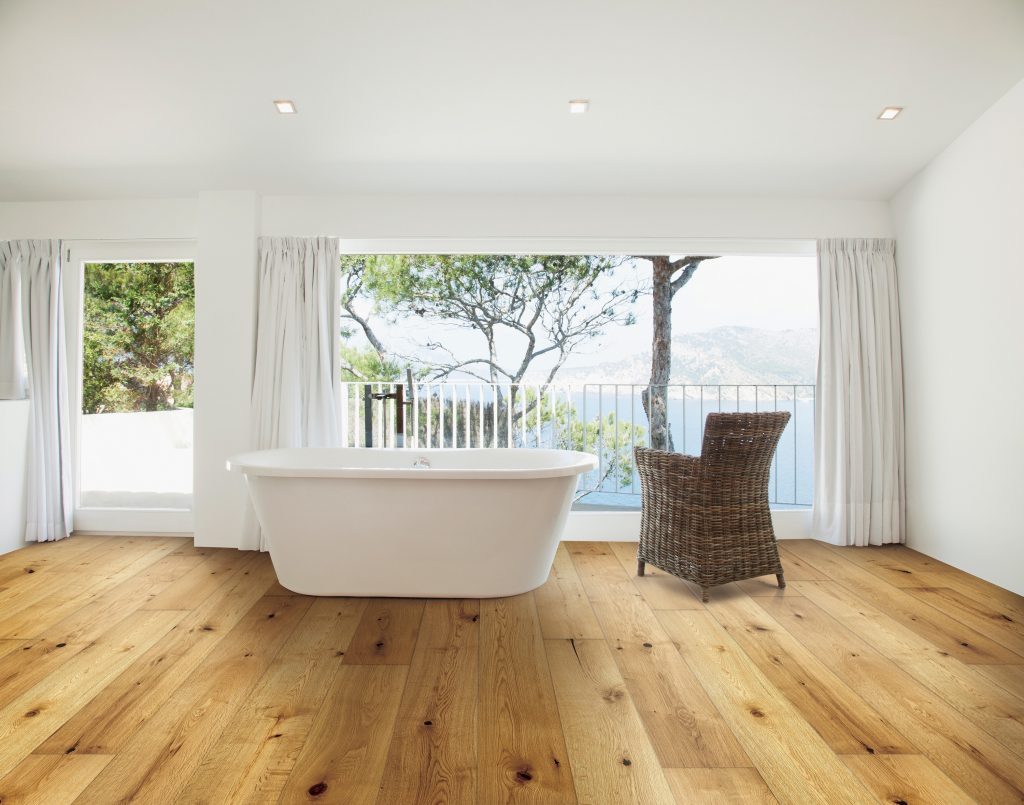Installation and Maintenance of Engineered Wood Flooring in Bathrooms: Engineered Wood Flooring Suitable For Bathrooms

Engineered wood flooring is an increasingly popular choice for bathrooms, offering the beauty of natural wood with enhanced durability and moisture resistance. However, successful installation and proper maintenance are crucial for maximizing its longevity and aesthetic appeal. This section will delve into the key aspects of installing and maintaining engineered wood flooring in bathrooms.
Installation of Engineered Wood Flooring in Bathrooms, Engineered wood flooring suitable for bathrooms
Installing engineered wood flooring in bathrooms requires careful planning and execution to ensure a durable and aesthetically pleasing result. The following steps Artikel the process:
Preparation
- Remove Existing Flooring: Before starting the installation, remove any existing flooring, such as tiles or carpet. Ensure the subfloor is exposed and accessible for inspection and preparation.
- Subfloor Evaluation: Thoroughly inspect the subfloor for any imperfections, such as cracks, gaps, or unevenness. These issues need to be addressed before installing the flooring. For example, cracks can be filled with epoxy filler, gaps can be sealed with wood filler, and unevenness can be corrected using self-leveling compound.
- Moisture Barrier: Install a moisture barrier over the subfloor to prevent moisture from penetrating the wood flooring. This is especially important in bathrooms, where moisture is prevalent. Common moisture barriers include polyethylene sheeting, vapor retarders, or moisture-resistant underlayment.
Subfloor Considerations
- Subfloor Material: Engineered wood flooring can be installed over various subfloor materials, including plywood, concrete, or OSB (oriented strand board). Ensure the subfloor is structurally sound and meets the manufacturer’s specifications for engineered wood flooring installation.
- Subfloor Flatness: The subfloor should be flat and level to ensure the engineered wood flooring is installed evenly and without gaps or unevenness. Use a level to check for any deviations and address them using self-leveling compound or shims.
- Subfloor Moisture Content: The moisture content of the subfloor should be within the acceptable range for engineered wood flooring installation. High moisture content can lead to warping, buckling, or other problems. Consult the manufacturer’s guidelines for specific moisture content recommendations.
Installation Techniques
- Acclimation: Before installing the flooring, allow the engineered wood planks to acclimate to the bathroom’s temperature and humidity for at least 48 hours. This allows the wood to adjust to the environment and prevents warping or shrinkage after installation.
- Installation Method: Engineered wood flooring can be installed using various methods, including floating, glue-down, or nail-down. The chosen method should be compatible with the flooring type and the subfloor conditions. Consult the manufacturer’s instructions for specific installation guidelines.
- Expansion Gaps: Leave expansion gaps around the perimeter of the bathroom and between the flooring and any fixed objects, such as walls or cabinets. These gaps allow the wood to expand and contract with changes in temperature and humidity, preventing warping or buckling.